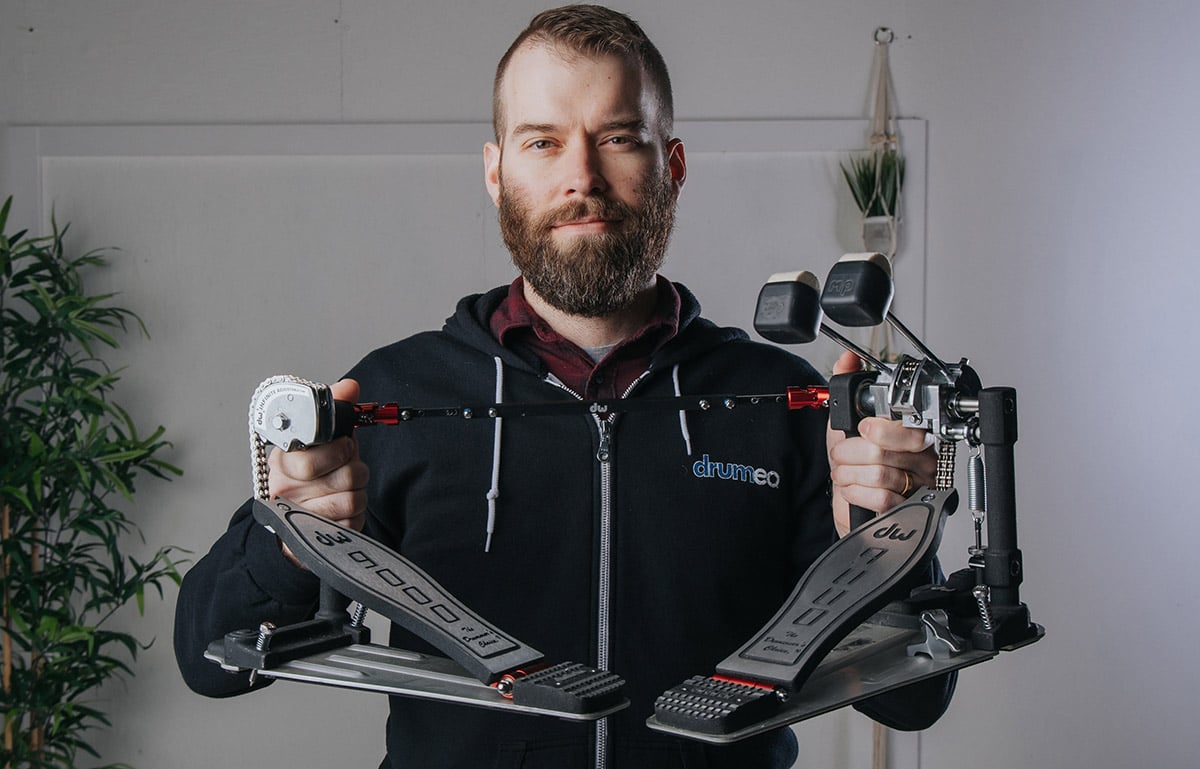
Here’s the quickest way to set up your double bass pedals:
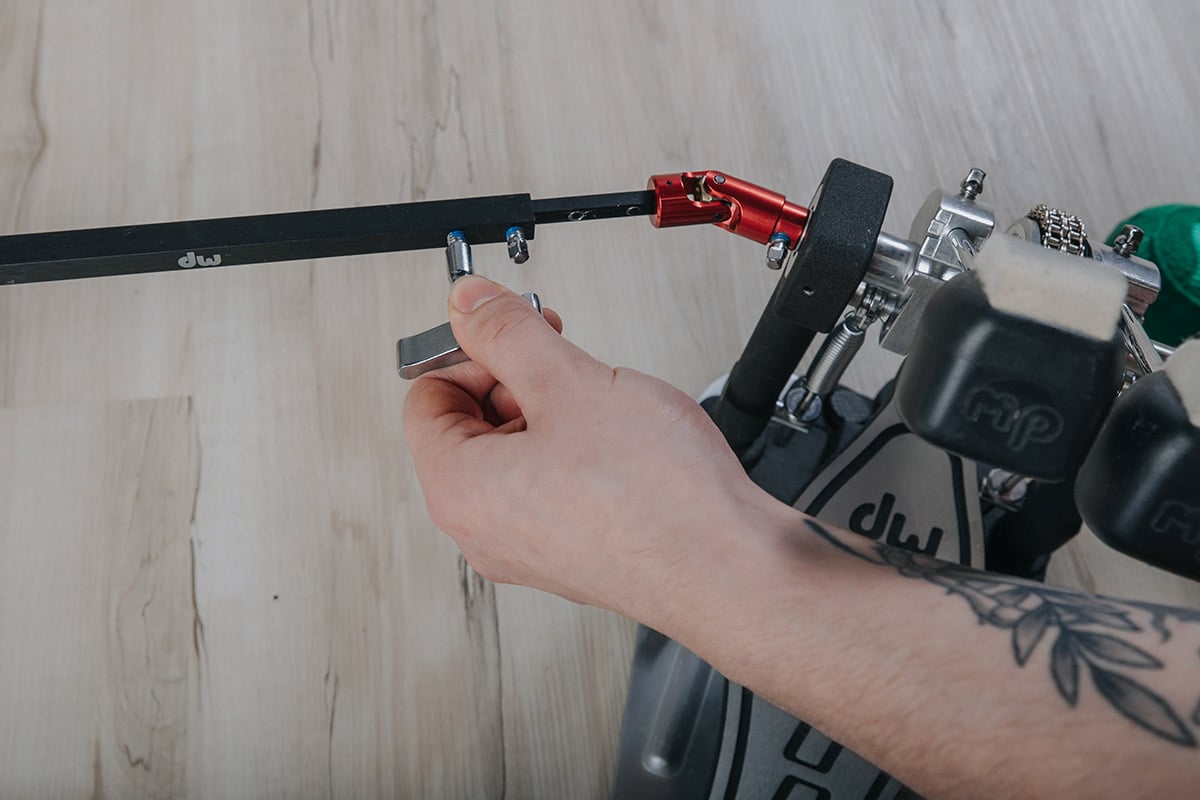
Use a drum key to connect the drive shaft to the pedals.
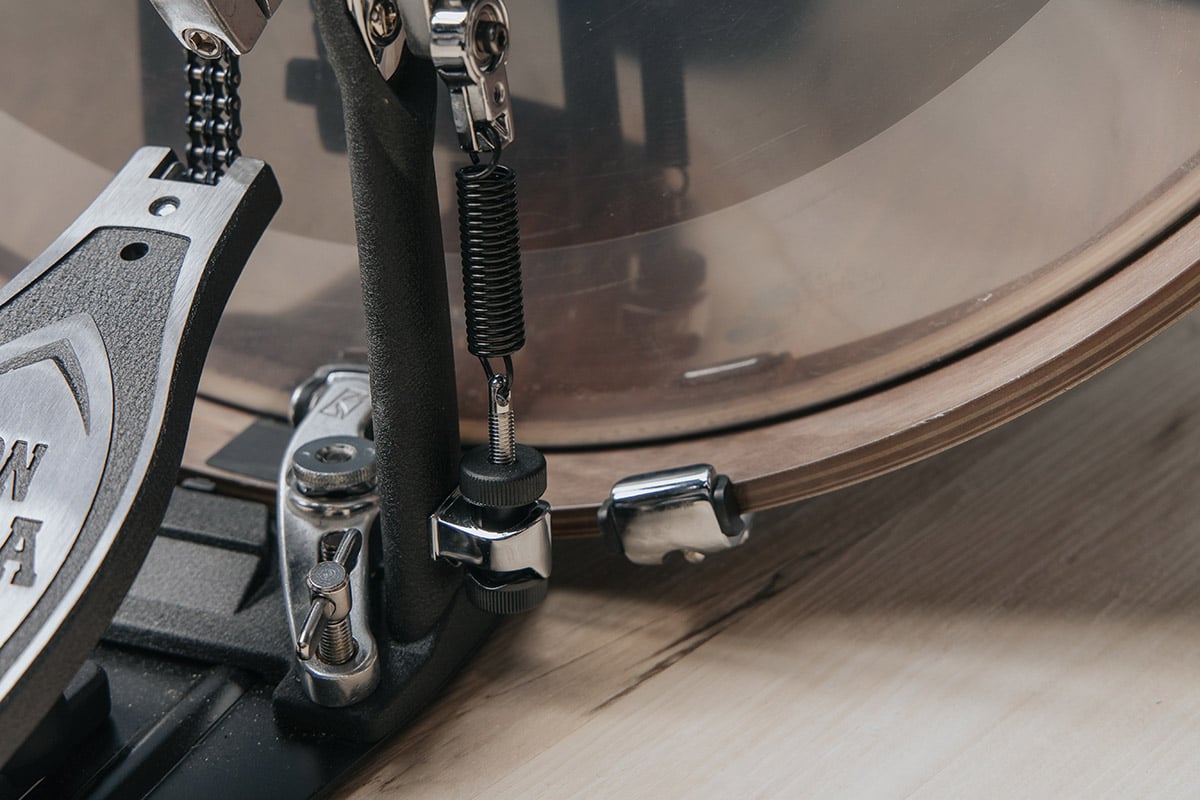
Attach the main pedal (with the two beaters) onto the hoop of the bass drum. Tighten the screw on the clamp with your fingers to keep it in place.
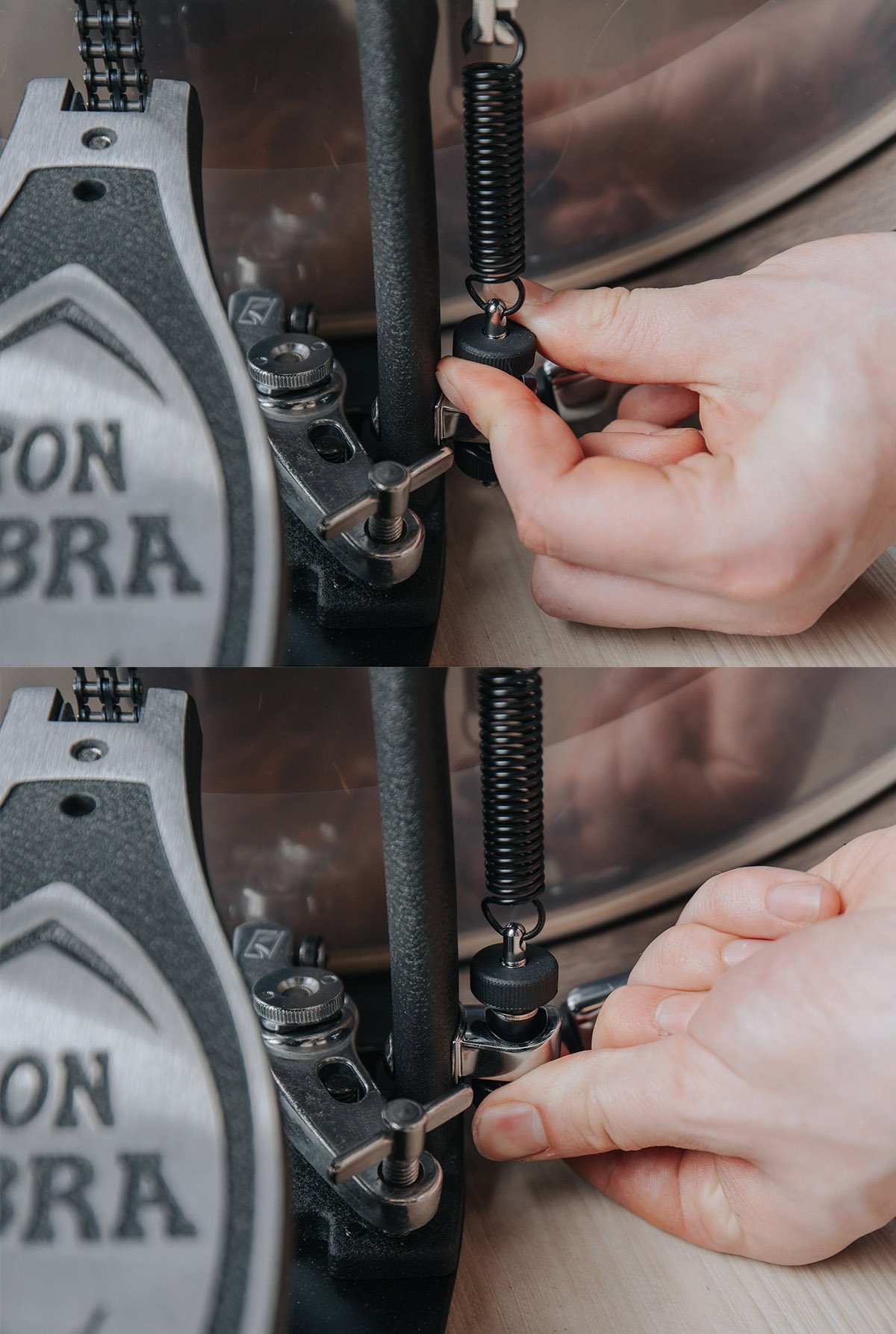
Adjust the spring tension on the pedals if needed. A tighter spring means quicker rebound.
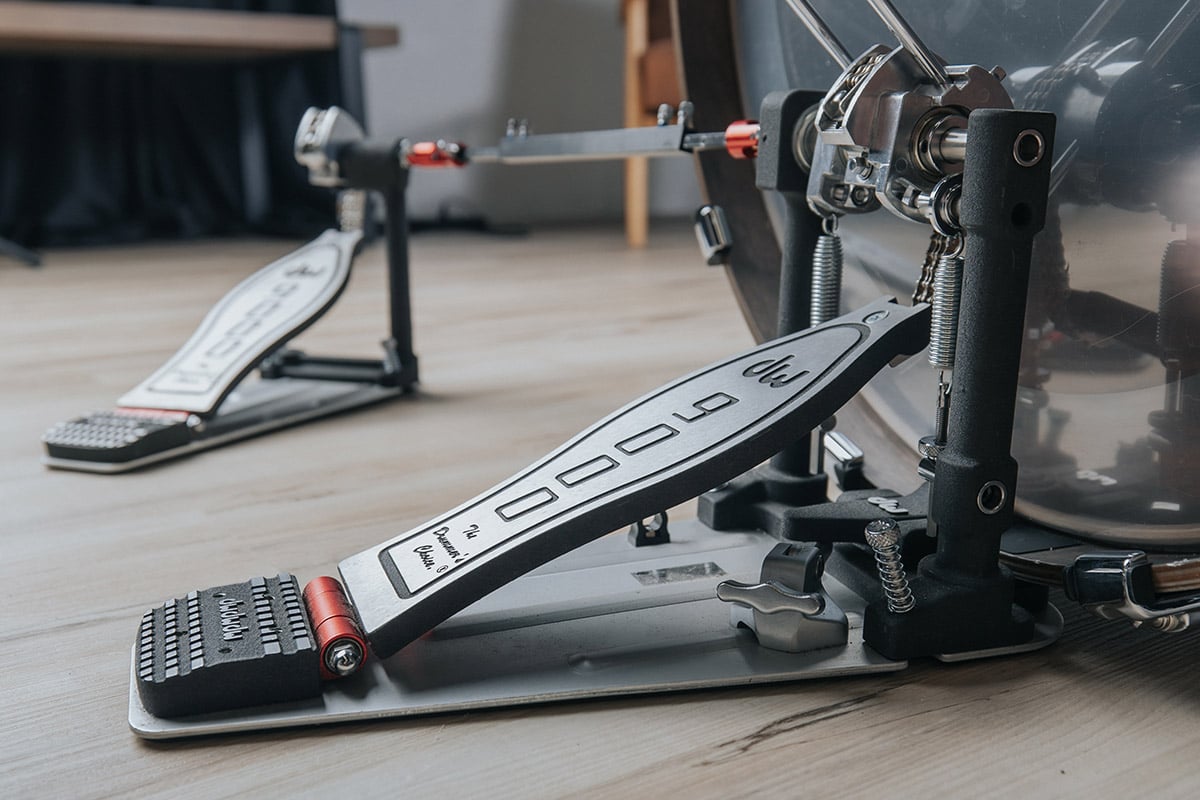
Use the drum key to adjust the footboard angle if needed.
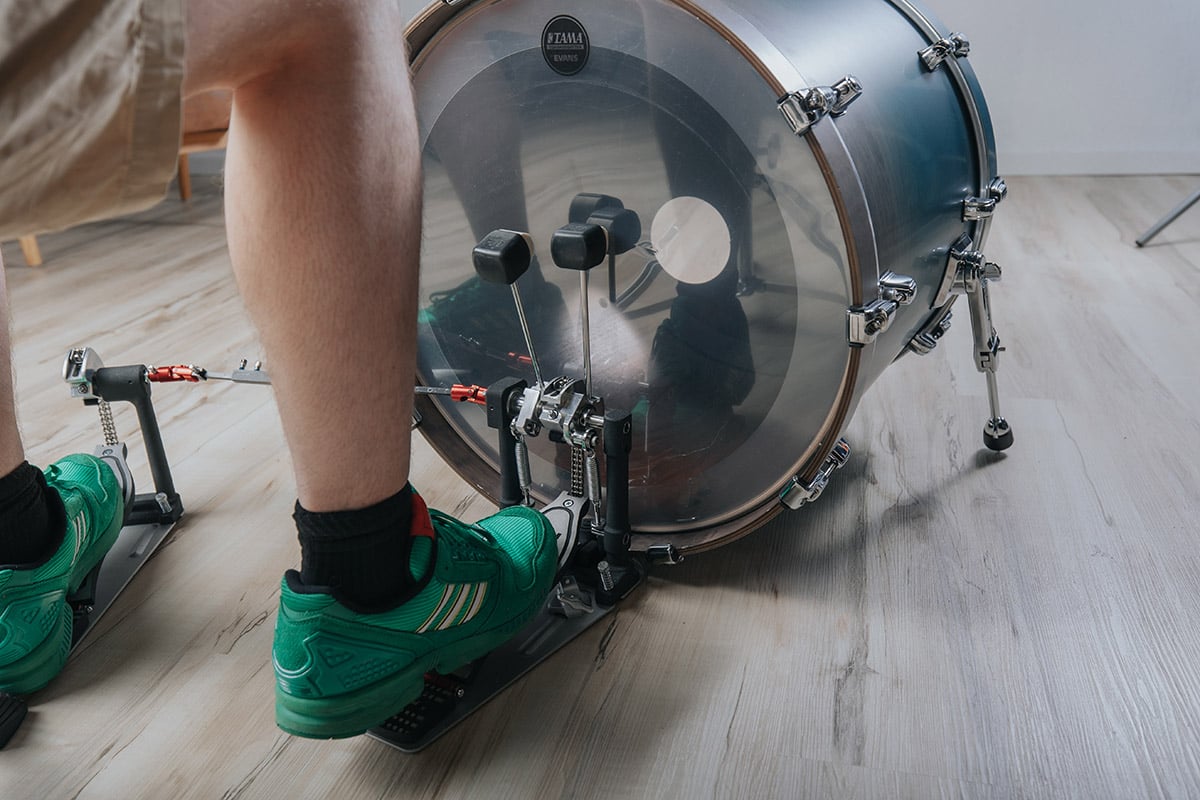
You’re off to the races! Feel free to keep making adjustments to the pedal position and settings until you’re comfortable.
That’s the TL;DR how-to. But read on if you’re looking for a detailed breakdown of how to set up double pedals.
Whether you’re using a double kick pedal or setting up two single pedals with two bass drums, the following tips will make your job way easier.
Dialing in the perfect settings on a single pedal can be tricky, so imagine trying to set up two! Don’t worry – it’s not as hard as it looks.
Different settings work well for different purposes, so read on to find out which double pedal settings are best for you.
(By the way, we’re going to use the terms ‘double bass’ and ‘double kick’ interchangeably here.)
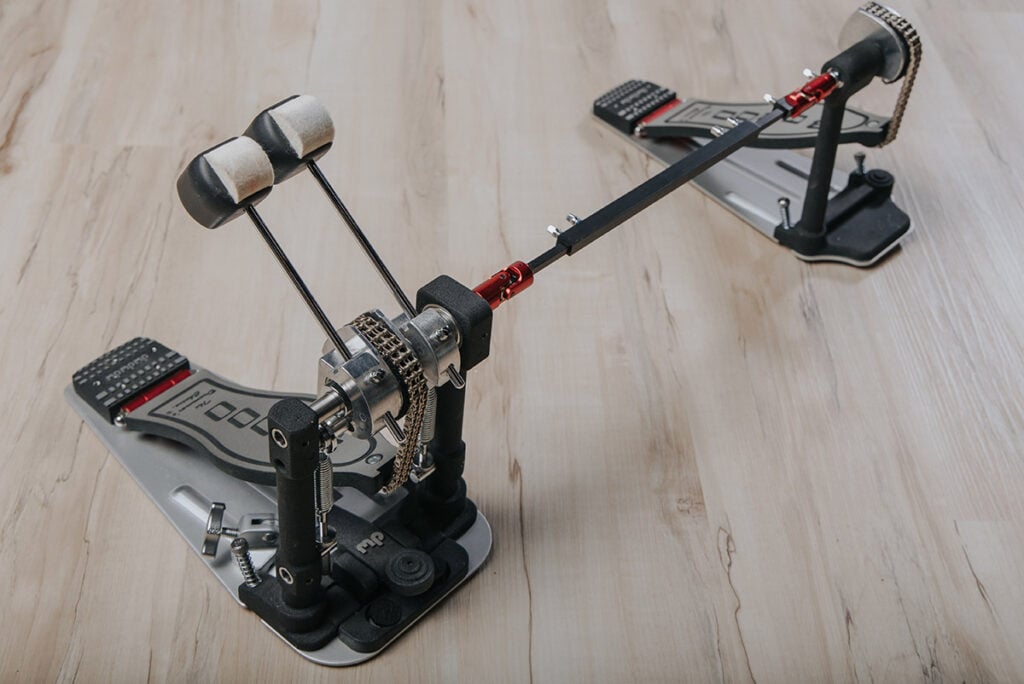
Bass drum pedals are some of the busiest pieces of drum equipment. They have so many adjustment options and learning about those options takes some time.
For a more in-depth breakdown of single pedal anatomy, check out this guide.
When it comes to double bass drum pedals, there are a few extra parts involved:
The location of these parts might differ slightly from pedal to pedal, but most double kick pedals are designed around a similar concept.
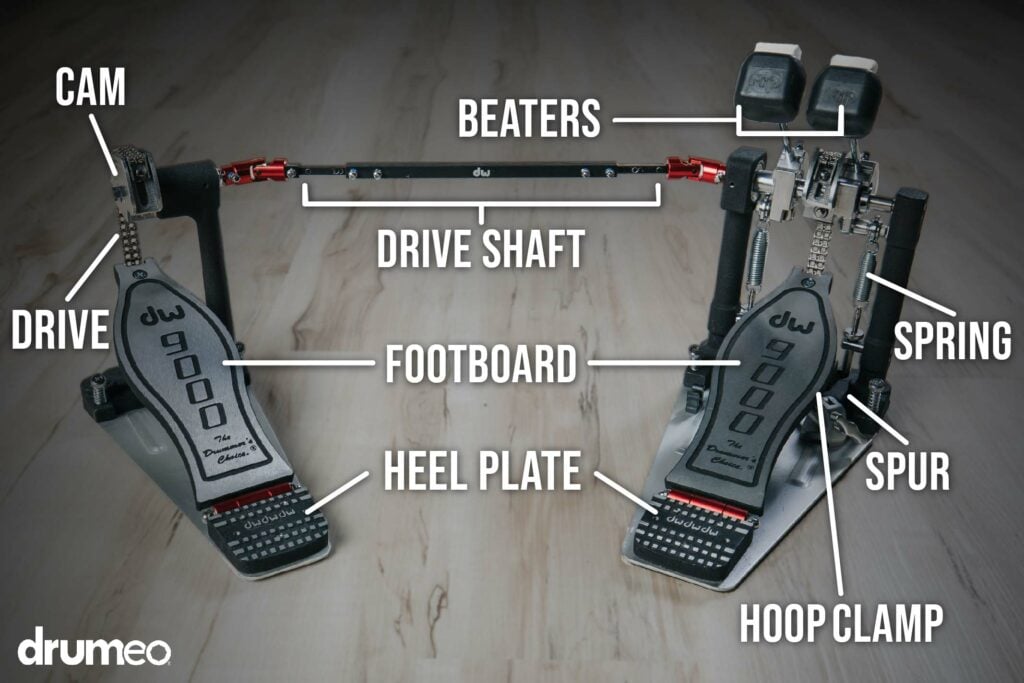
It’s a lot easier to set up a double pedal when the main pedal isn’t attached to the bass drum yet. Set all the parts out on a flat surface where you can see everything and start by attaching the second kick drum beater to the main pedal. Make sure it’s the same height as the primary beater.
After that, you’ll need to attach the drive shaft that links the primary pedal to the slave pedal. You’ll need a drum key to tighten the screws, but you should first make sure that the slave pedal sits at the same height and angle as the main pedal before tightening them too much.
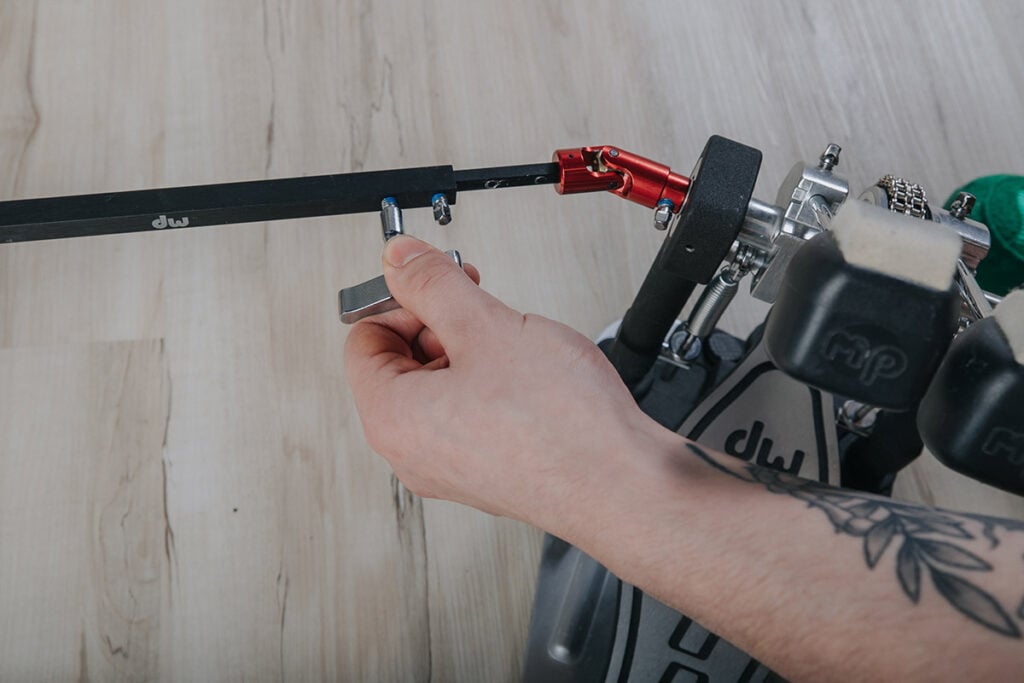
Don’t worry about the exact settings for now; we’re just trying to set the general positions.
When both pedals are sitting comfortably at the same height, and you can feel some resistance when pressing on them, the next step is placing the pedal on the bass drum.
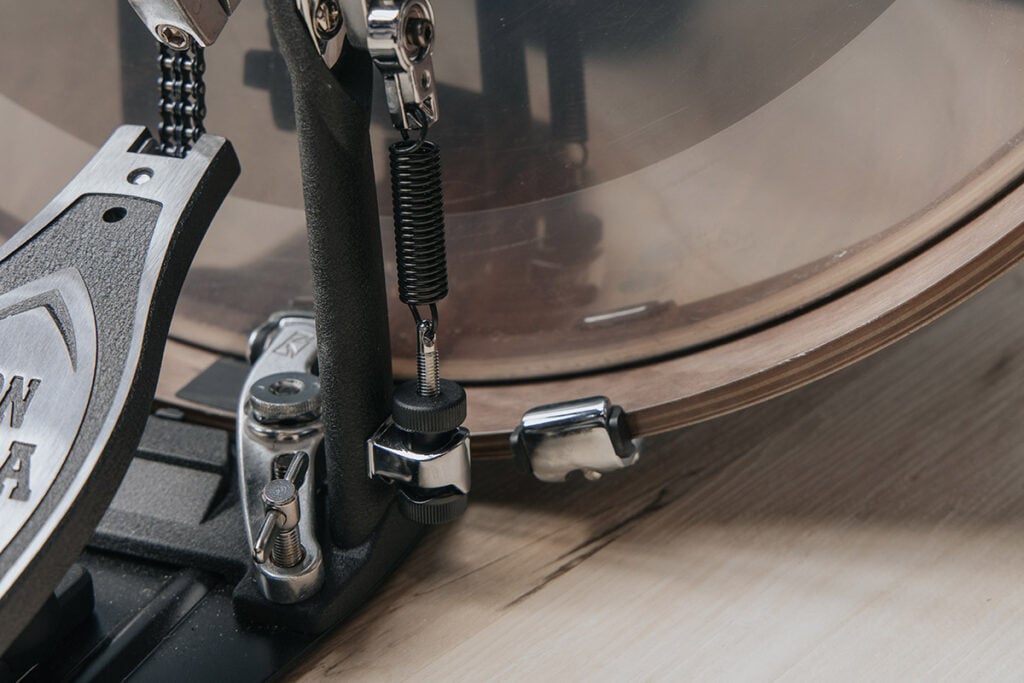
Every bass drum pedal has a clamp that lets you attach the pedal to the hoop of the bass drum. You tighten this clamp with either a wing bolt or a drum key, depending on the type of pedal you have.
Tightening the clamp too much and leaving it for extended periods often leaves marks on the hoop, so we recommend getting a hoop protector if you want to preserve the wood as much as possible.
Alternatively, you could fold the piece of cardboard that came with your last pair of drumsticks and wrap that over the hoops. David Raouf is a fan of this idea, and it’s totally free.
Make sure the bass drum angles out slightly to the right, rather than directly in front of you. If you aren’t sure what angle to place the drum, sit down and see where your feet naturally land. Then place the pedals and bass drum.
One of the biggest hurdles for double kick drummers is finding a comfortable spot for the secondary pedal.
Here are the easiest solutions:
If your hi-hat stand’s legs don’t rotate, placing the slave pedal to the left of the hi-hat pedal is one way to keep your stand as close as possible.
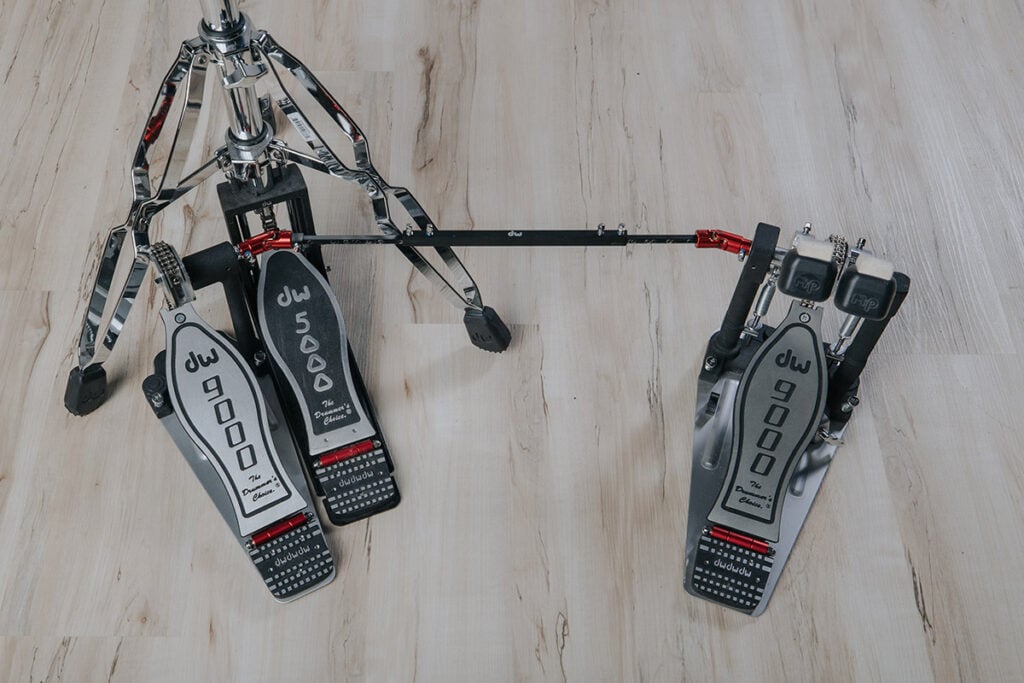
You could technically set it up to the right of the hi-hat by sliding it under one of the hi-hat legs, but the leg may get in the way.
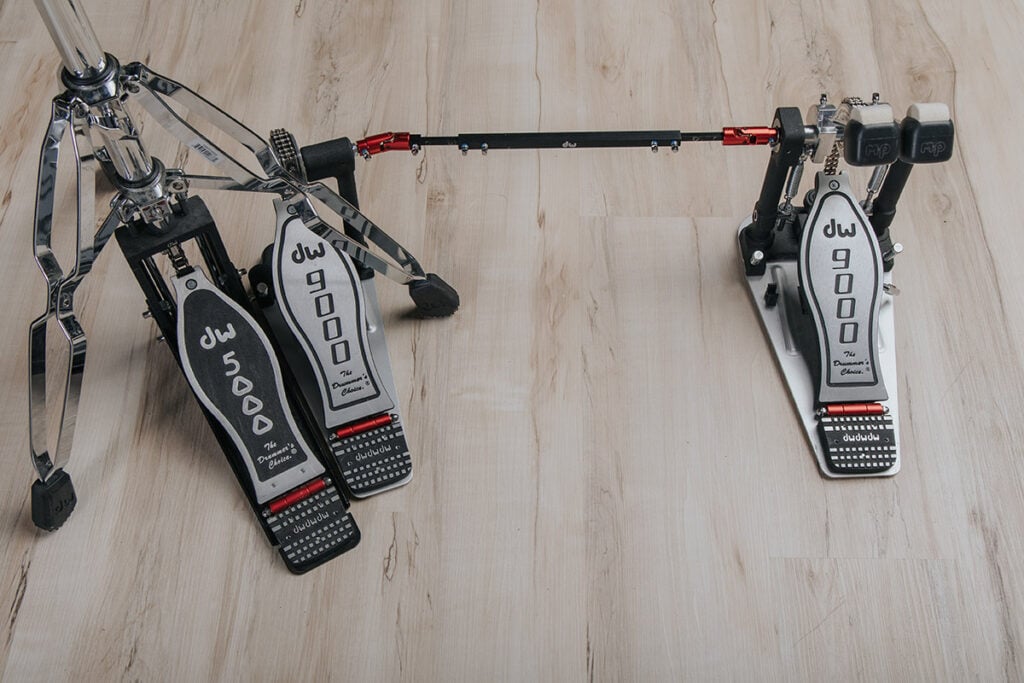
If the hi-hat stand’s legs can be rotated – or if you have a two-legged hi-hat stand – you can rest the slave pedal to the right of the hi-hat without blocking the hi-hat pedal.
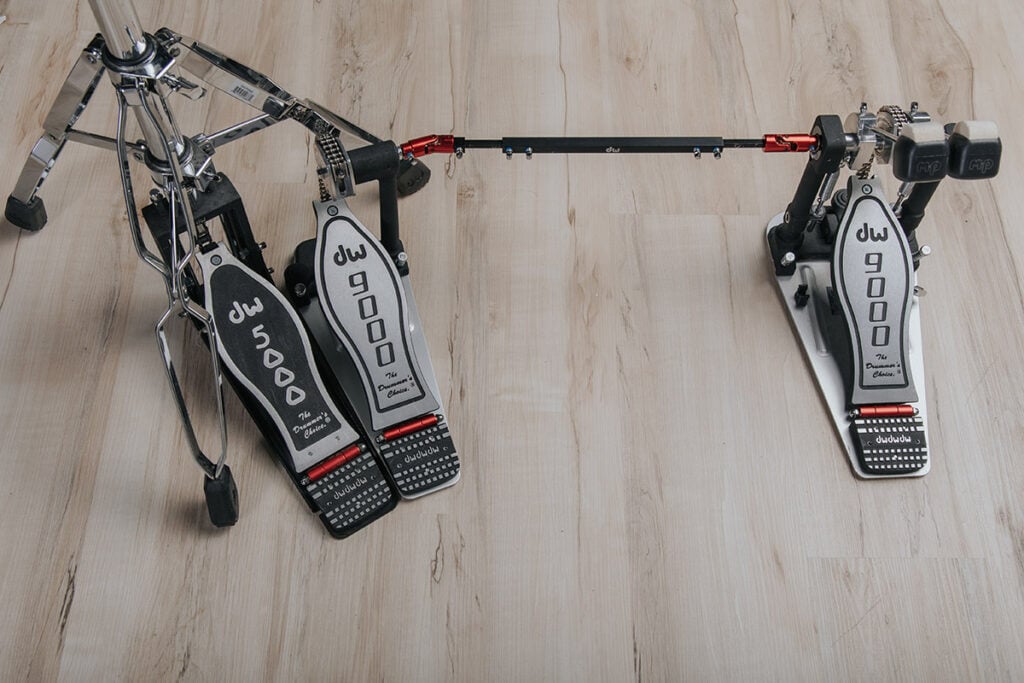
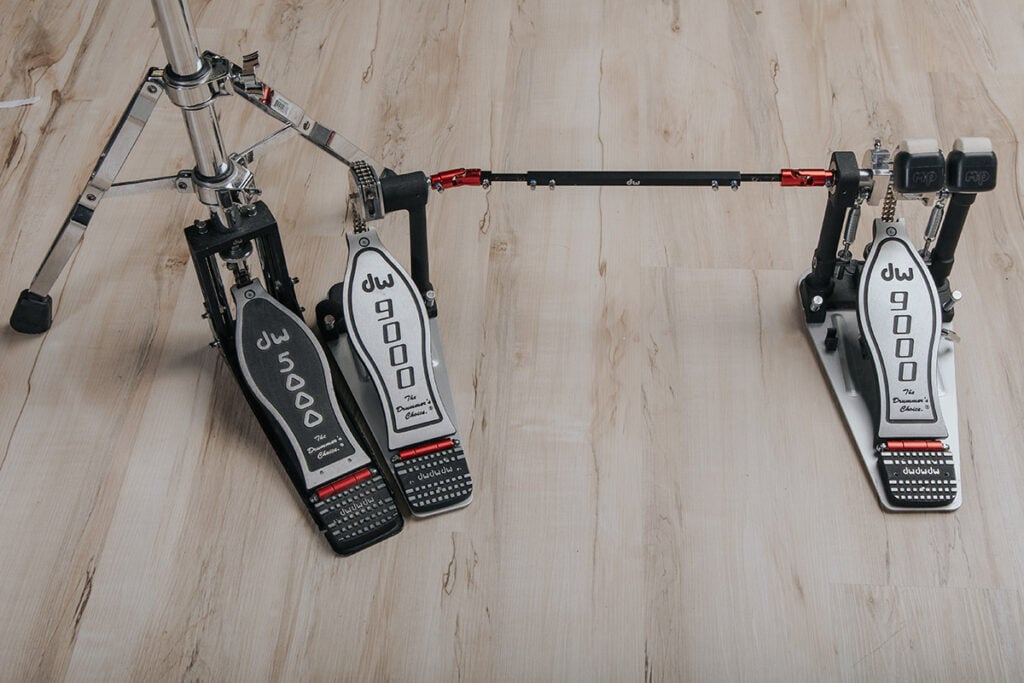
Getting a two-legged stand will make things a lot easier, but we’d suggest getting a top-quality one if you go that route. The lack of a third leg makes a stand a bit less sturdy. Some good options are the Tama HH905D Iron Cobra and the Ludwig Atlas Pro.
The key to dialing in good spring tension settings for double pedals is to find a balance of speed and resistance.
Most pedals have a similar tension adjustment design (one notable exception is Trick pedals, which use a dial). If you need to tighten the springs – which requires pulling them down – loosen the screw on top first, then move the screw on the bottom to lock it in place.
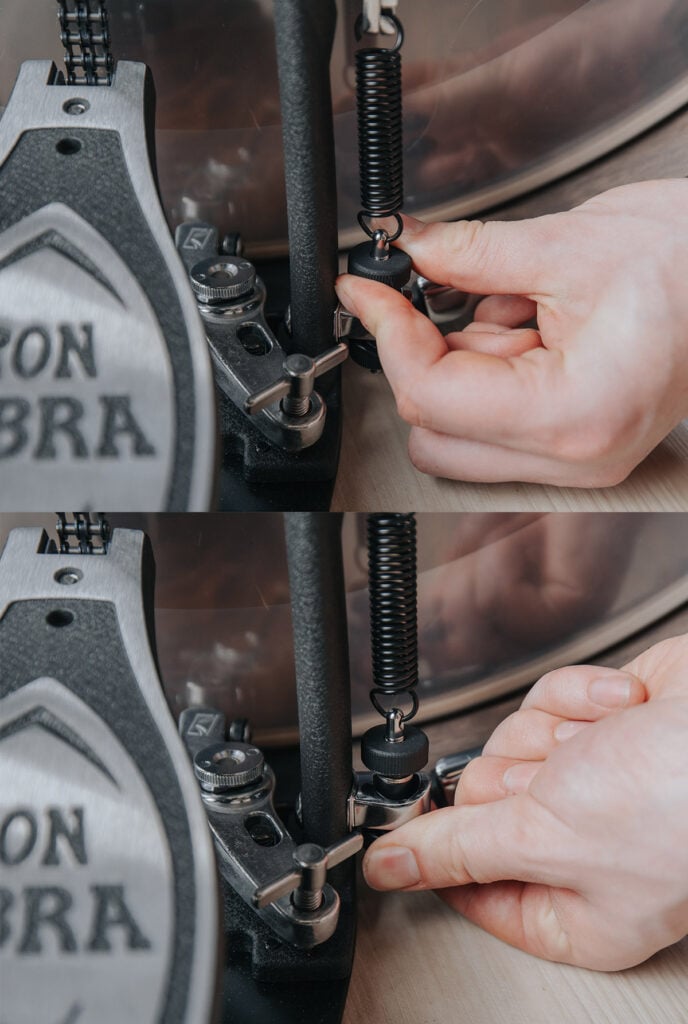
If the spring tension is too tight, the pedal might rebound too quickly for the tempo you’re playing, making it hard for your foot to keep up. If the spring tension is too loose, your legs will be doing all the work, and you’ll deplete your stamina much more quickly. Not ideal for double pedal playing!
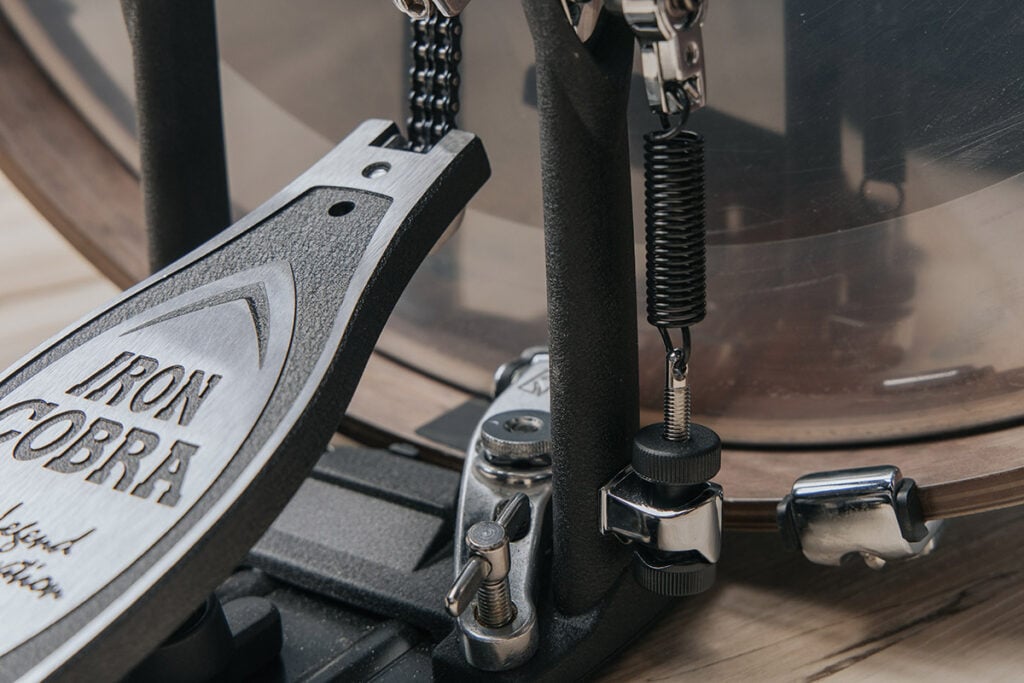
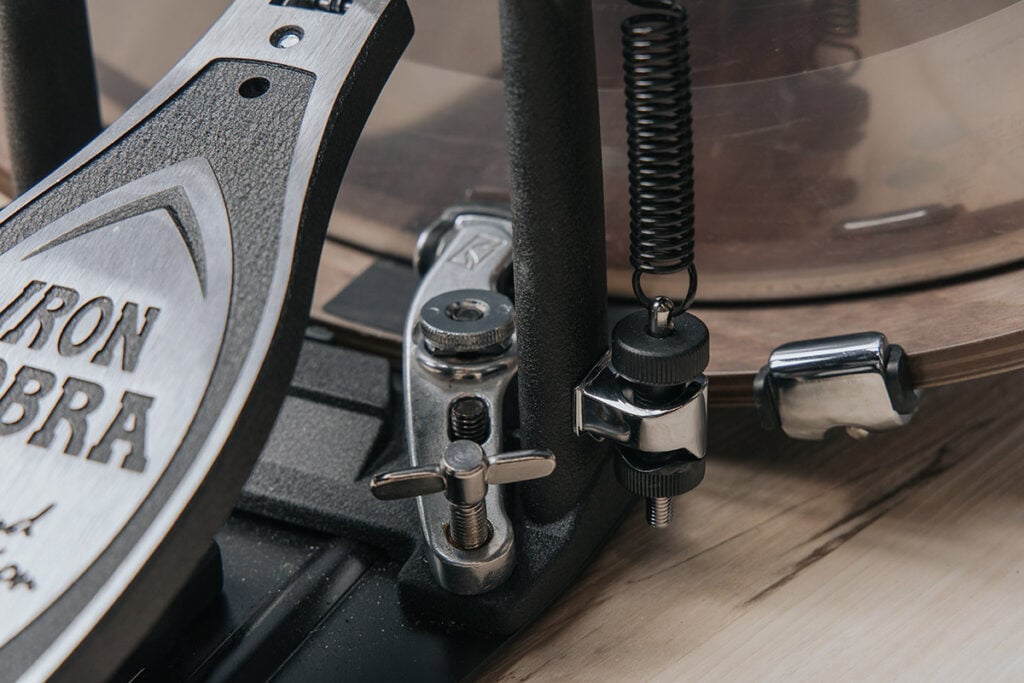
Try to find the sweet spot between those two factors. Sometimes it takes trial, error, and patience to figure it out.
When adjusting the footboard angles, you’ll notice that the angle at which the beaters swing toward the bass drum changes as well. This is important to note as it affects the velocity of your bass drum strikes.
The lower your pedals are to the ground, the closer your beaters will be to the bass drum.
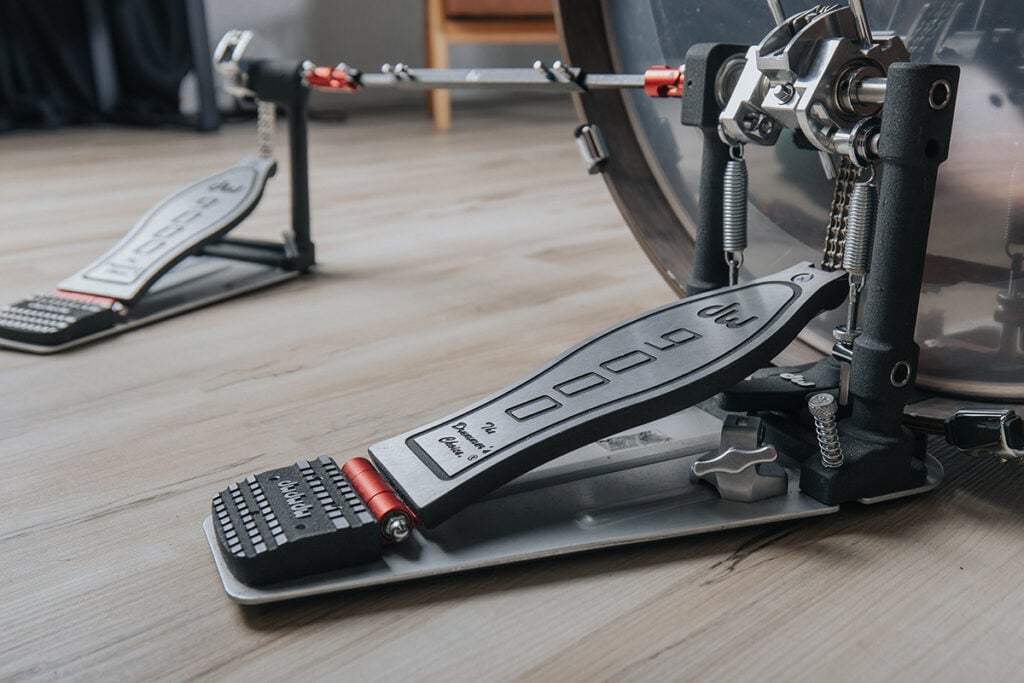
There’ll be more distance between the beater and the drumhead when your pedals are angled higher from the ground.
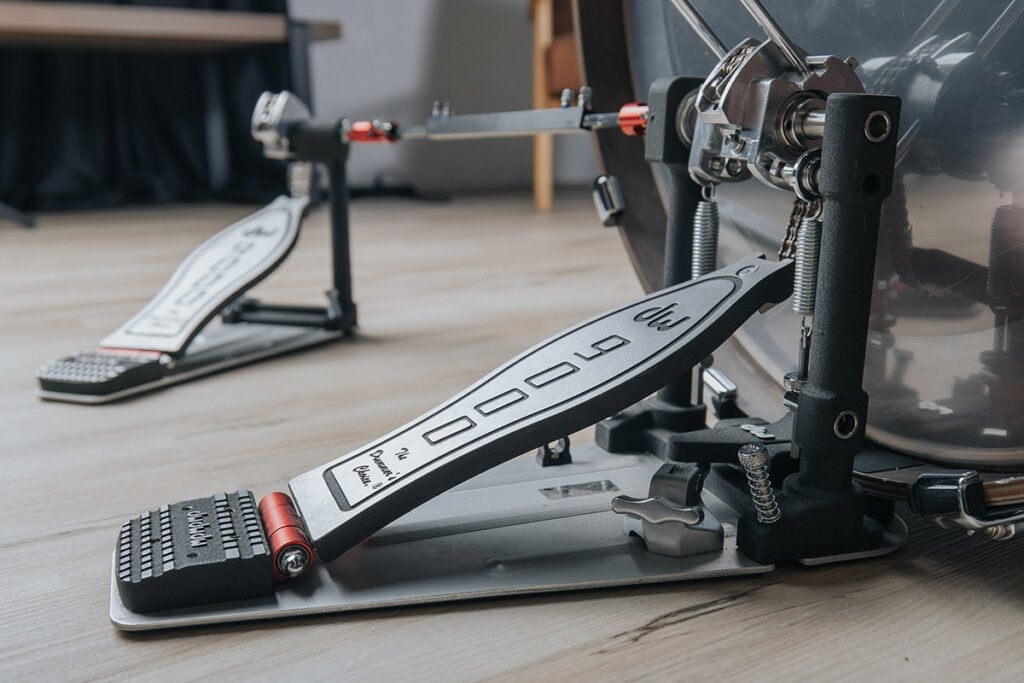
Try to find a happy medium with your footboard angle (somewhere around 20-25 degrees). Just note that if there’s a bit more distance between the beater and the head, momentum will be on your side, and you may be able to play fast double bass patterns for longer.
Your beater height depends on the size of your bass drum. The best place for the beaters to sit is a position that lets them strike near the center of the drumhead.
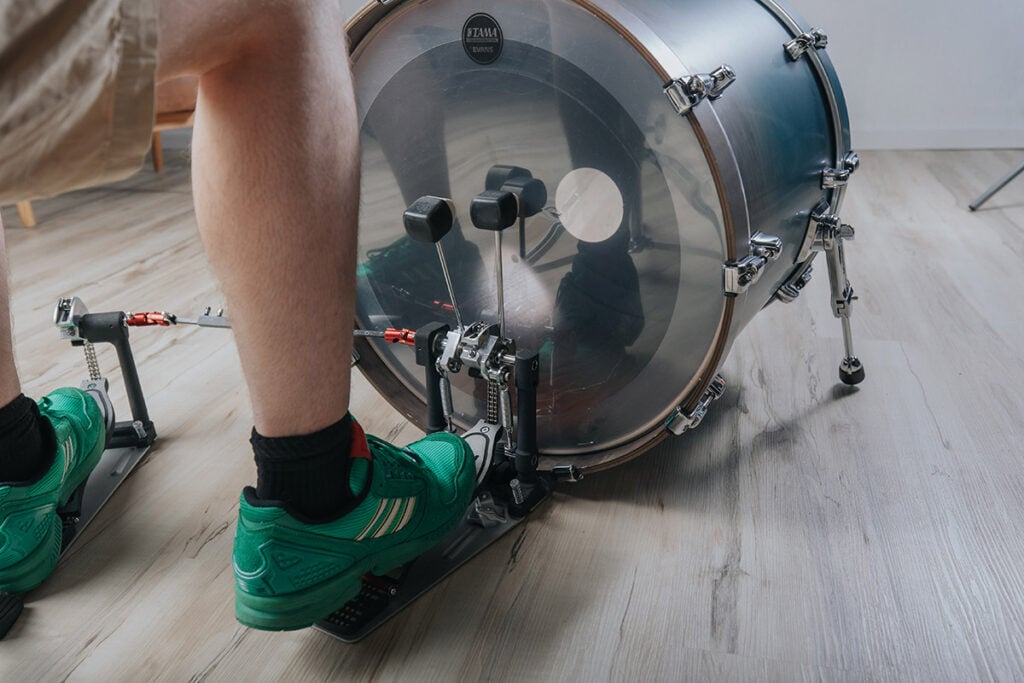
However, you can adjust the height of your beaters slightly to achieve different levels of intensity with your strokes. Higher beaters will give you louder bass drum notes, while lower ones will sound less intense.
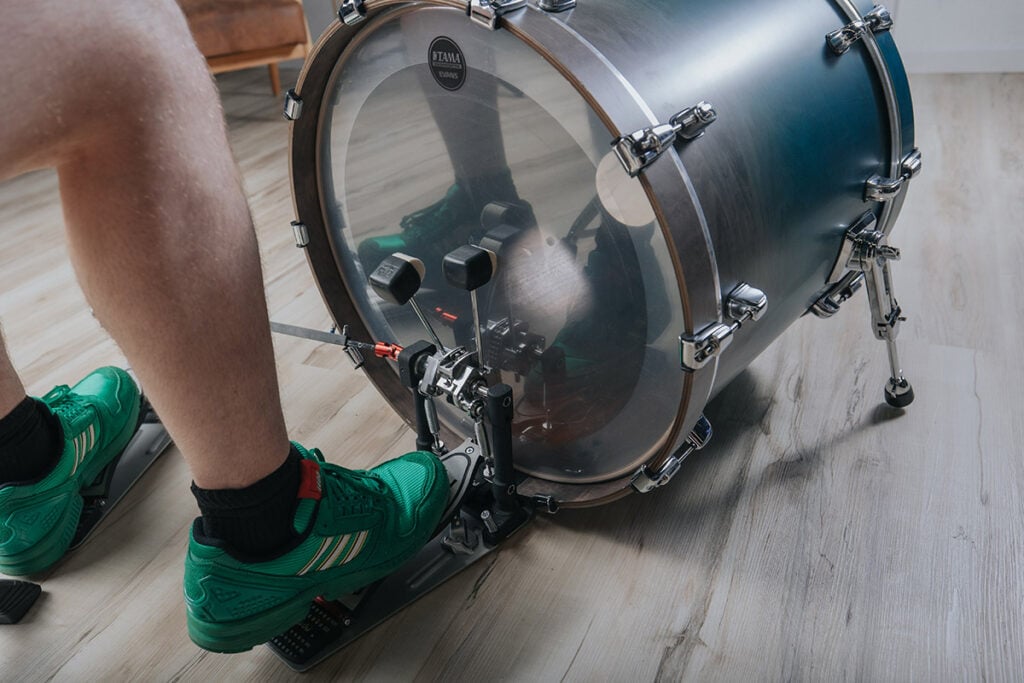
You should lower the spring tension for powerful double bass playing as you’ll be able to use the full motion of your legs to get more force behind your strokes. You’ll get a bit more volume if you raise the heights of your beaters (don’t raise them too high, though, or they might hit your shins when they bounce back).
You’ll also get more volume if your pedals are angled high. With more space between the pedals and the floor, you’ll be able to hit the bass drum harder.
To get the most power, you probably want to play heel-up with your feet higher up on the pedals.
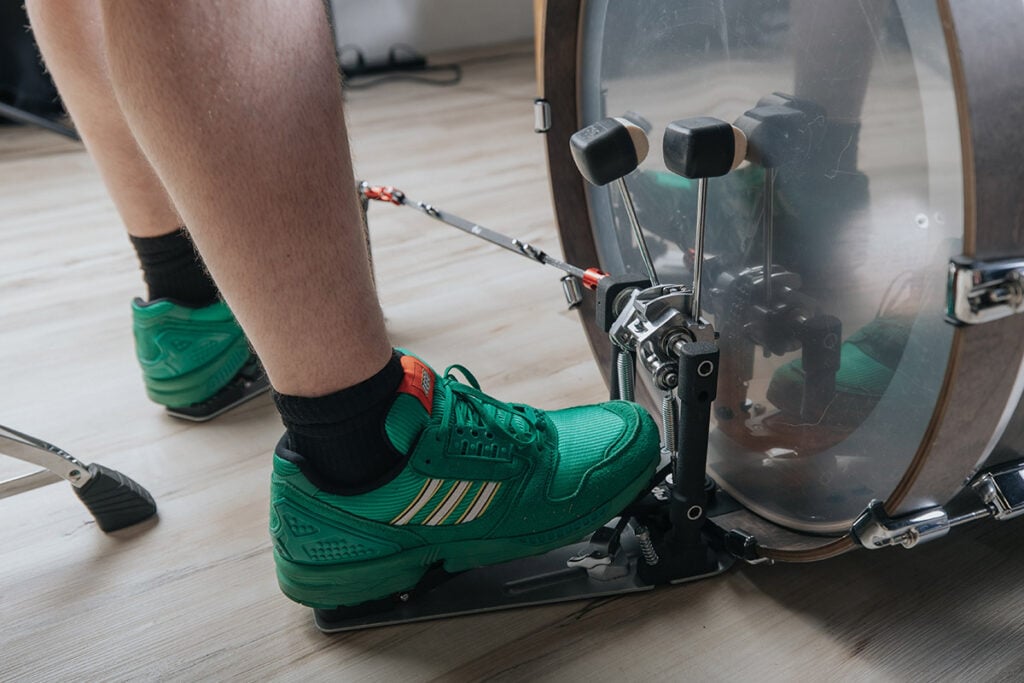
Higher spring tension is best for faster playing. Your feet can use the rebound/momentum of the pedals to maintain steady speeds.
A medium angle is best for your footboards. If the angle is too low, you won’t get volume. If it’s too high, playing fast patterns will be hard.
To get the most speed, you probably want to play heel-up with your feet further down on the pedals.
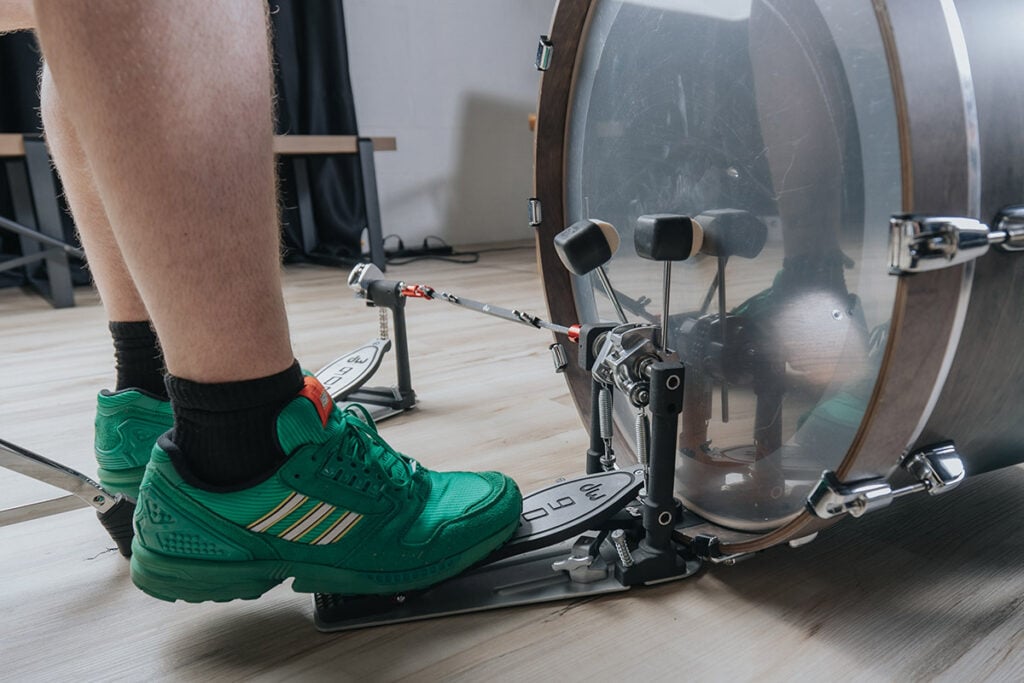
A lower footboard angle is best for using the heel-toe technique, considering there’ll be less movement time between your heel and your toes. Tight tension settings are also great as they produce more rebound from the beaters for more efficient playing.
The standard way to set up two bass drums is to place your snare drum in between them. Set these up first, then you can place all the other drums.
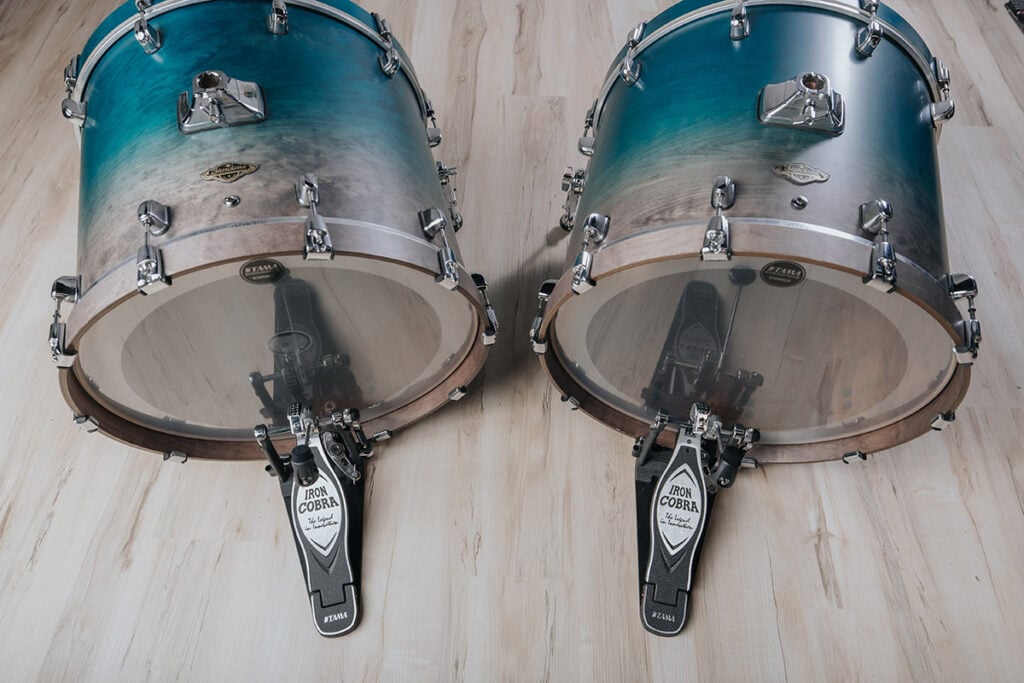
Make sure you use the same types of single pedals. While you may be able to dial in similar settings on different pedals, they’ll rarely be the same (thanks to different setting options from multiple brands).
With a double bass drum setup, face the bass drums slightly outward and angled from your body. Funnily enough, this is actually a bit more ergonomic than the single bass drum setups that many drummers usually go for.
(You should tell that to the next person who questions your choice of using two bass drums)
The benefit of having two single pedals is that you don’t have the added weight of the drive shaft. Without it, you can easily dial in the same settings for each pedal.
To check if your tension settings are matched, push both pedals with your hand and see if they wobble at the same speed. If one goes faster than the other for the first few seconds, it means its tension is higher.
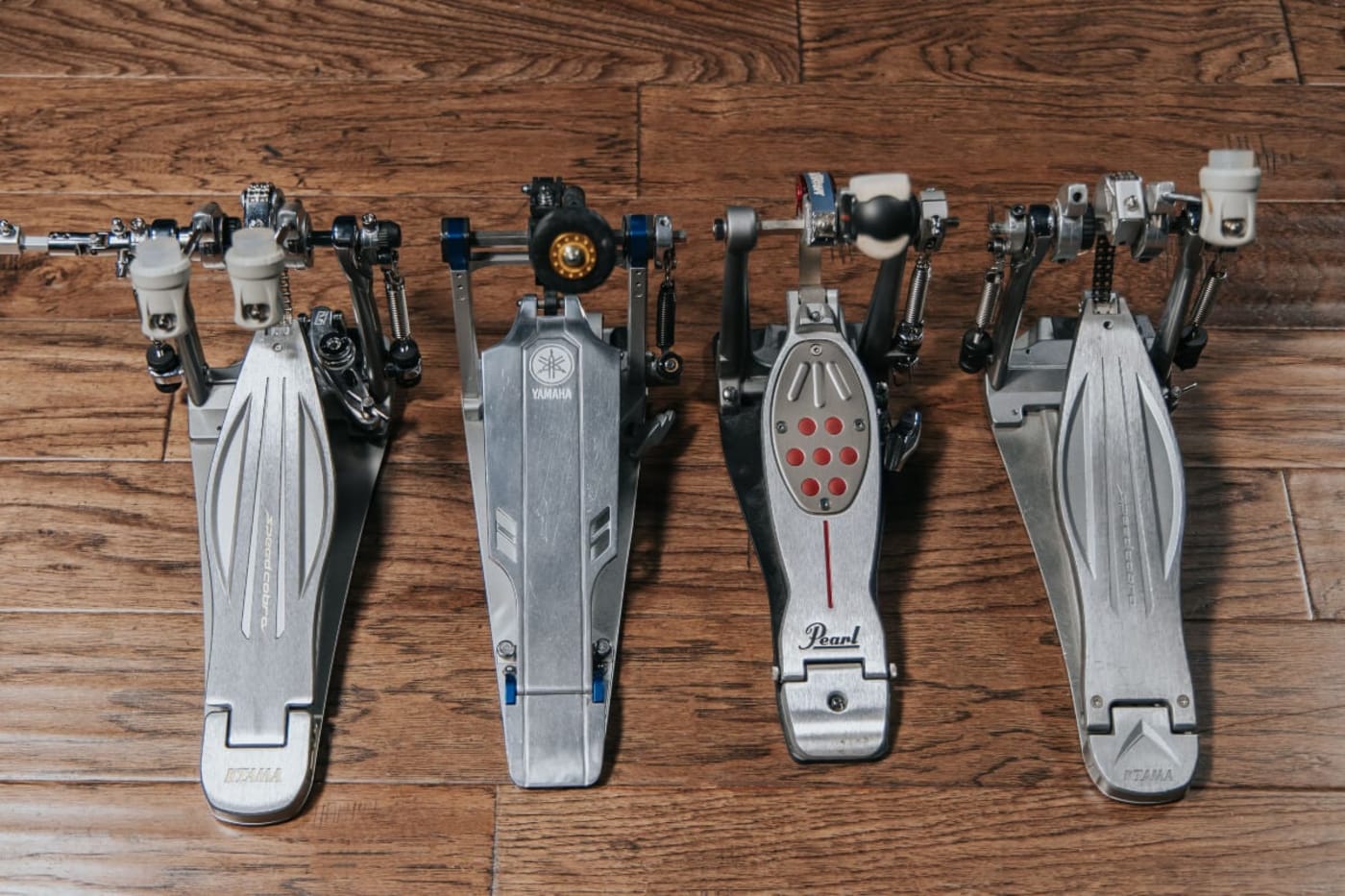 Want to know more about beater types, pedal brands and more?
Want to know more about beater types, pedal brands and more?Offset pedals allow you to place your bass drum directly in front of your snare drum and align the rest of your kit in a symmetrical way. These pedals give you the same benefits as a dual bass drum setup. They’re ergonomically excellent, allowing you to play with both legs at natural angles to your body.
The downside is that you’re essentially playing with two slave pedals. The response isn’t as direct as it would be with standard pedals. They feel epic to play once you get used to that, though.
There’s always trial-and-error when it comes to finding the perfect pedal settings. Everyone has their preferences. While you may think you’re running on clouds with your pedals, your friend might sit behind your kit and hate how it feels.
Learn how to set up your pedals in a standard, ‘happy medium’ configuration and then fine-tune from there to suit your preferences.
Once you’re all set up, here are some free double bass resources to check out:
On top of these, Drumeo has a ton of double bass video lessons and play-along tracks for drummers of all skill levels – plus personalized feedback, active community forums, practice tools and so much more.
You’ll even find beginner and intermediate ‘boot camps’ where you work on control and endurance alongside a seasoned double bass drummer who walks you through the exercises.
A Drumeo membership costs just $20 a month and it’s absolutely worth it. Click here to learn more.
Drumeo Team - We're professional, award-winning drummers and drum teachers, coaches, recording artists, and content specialists who are passionate about drums and helping drummers around the world. This post was written and/or edited by Sam Landa, Brandon Toews, Jared Falk, Dave Atkinson, or another pro on our team (which has a combined 1000+ years of drumming experience). Are you looking for inspiration, education, and support to take your playing to the next level? Join the Drumeo community today!


By signing up you’ll also receive our ongoing free lessons and special offers. Don’t worry, we value your privacy and you can unsubscribe at any time.
We use cookies for traffic data and advertising. Cookie Policy »